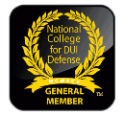Masonry Chemicals Interference Case
State v. R.W.
Blood / Alcohol Content (BAC):
.16%
Defense:
Interfering chemicals
Defense Attorney:
Matthew B. Nichols
Offense:
Operating Under the Influence-2nd Offense (OUI, DUI, DWI)
Maximum Sentence:
364 days in jail, (minimum 7 days in jail) 18 month license suspension and $2,000 fine
Synopsis:
Client was a self employed mason living in a rural town in mid-coast Maine. An 18 month loss of license would have effectively put him out of business, in part, because he had no employees. Client’s original attorney told him that nothing could be done to win his case and referred client to Attorney Nichols in the hope that something would turn up in the way of a defense. Client was stopped for speeding. Client performed poorly on his field sobriety tests, was arrested and blew a .16% BAC on the intoxilyzer.
As a result of a detailed initial intake, Attorney Nichols discovered that client experienced extensive exposure to a number of interfering chemicals earlier in the day upon which the alleged offense occurred. Attorney Nichols obtained the MSDS for the products to which client was exposed as well as a detailed account from client regarding the work that he performed and the conditions under which the work was performed (client was building an entertainment center for his wife as an anniversary gift; the work was performed in the workshop/barn that was heated only by salamander heating devices; client’s account of what occurred as well as MSDS provided additional documentation of materials to which he was exposed in the course of building the entertainment center.) Client testified to explain to the jury, not only his exposure to interfering chemicals, but to explain the amount of alcohol he consumed.
Next Dr. Carolyn Howard testified for the defense. Dr. Howard explained to the jury, based upon client’s testimony client’s blood alcohol was only about a .03% BAC. She further testified that his described exposure to interfering chemicals would also cause such chemicals to be produced on his breath and introduced in to the Intoxilyzer sample chamber. Lacking specificity, the Intoxilyzer reported all chemicals on client’s breath as ethanol hence the discrepancy of the true blood alcohol level of .03% and reported level of .16%.
Verdict:
Not Guilty





